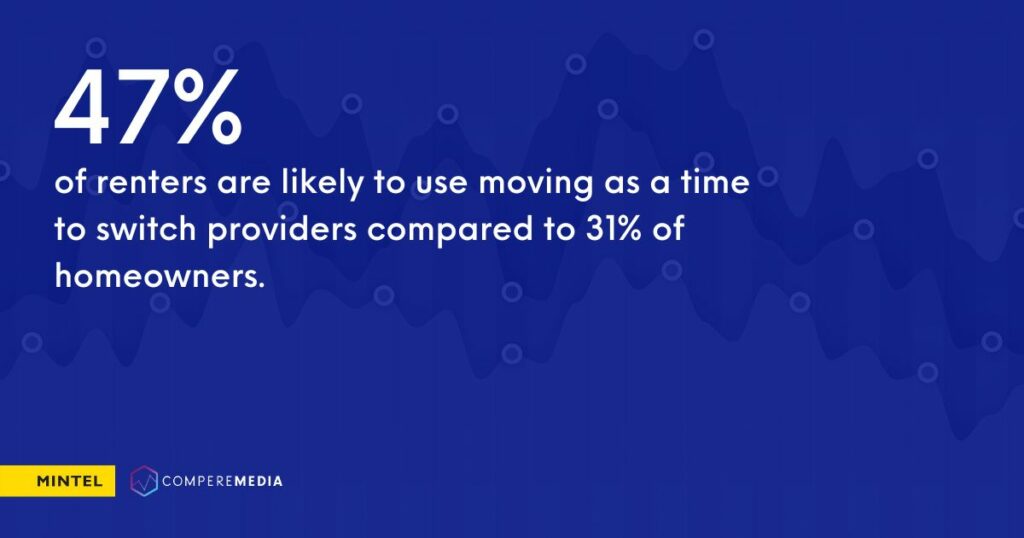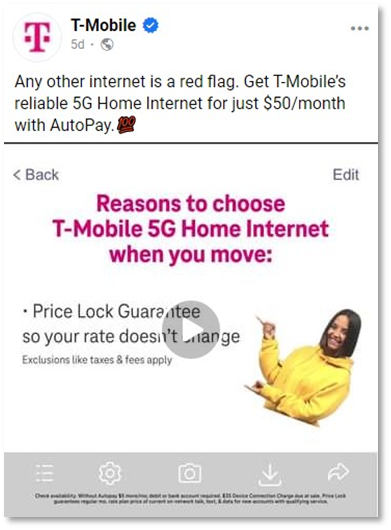How will a difficult housing market affect movers marketing in 2024?
Recent Mintel research shows that 30% of adults who switched home internet providers in the past five years did so because they moved, making the mover’s audience a particularly crucial one for telecom brands to reach. However, that share is down from 37% in 2023, signaling a smaller audience within this crucial segment. Combined with a difficult housing market, providers have been forced to pull back in some ways and find new avenues to reach this (temporarily) smaller consumer group. As the volatile housing market strives to achieve stability, wary buyers may continue to hold out until interest rates improve.
Here are a few predictions about how telecom brands will respond to some key considerations when addressing movers in 2024:
A Cautious Year:
Mintel research shows that 16% of adults have said current interest rates have deterred them from purchasing a home. The jury’s still out on whether slightly rebounding interest rates are going to reinvigorate the buyer’s market. With average interest rates still more than double what they were a few years ago though, telecom providers will pull back a little from the busy summer months in response to consumer uncertainty.
Amidst its price hikes, T-Mobile doubled down on convenience and price locks to solidify its position as a suitable cable alternative.
Our prediction: Telecom brands’ efforts will be redirected to lower-cost digital channels to gain greater awareness. The messaging will also see a shift; focusing on a more comforting tone in an effort to build up consumer trust.
Renters Market:
Renters are very rarely the primary target for movers messaging, yet according to Mintel consumer research, they are significantly more likely (47%) than homeowners (31%) to use moving as a time to switch providers.
A difficult buyer’s market, and the reality of wage increases not keeping up with rental increases, renters, especially slightly older renters, will be particularly open to lower-cost cable and fixed wireless opportunities to get them through this period.

Our prediction: Cable alternatives will more directly and aggressively target renters, using consistency and convenience to drive home the value of shorter-term housing situations.
The Post-Mover:
Providers will hedge their bets more by steering away from the pre-mover to attract the attention of the post-mover, which is a notably easier audience to identify. Cable alternatives will be particularly active in establishing their presence in communities they’ve expanded into, playing the long game to deliver a more valuable service for movers once the moving dust has settled.
Extended coverage within the home can help reach movers who don’t want to worry about reaching all the corners of their newly acquired larger space. AT&T’s All-Fi has become a fixture of its movers marketing across digital channels. Movers with large families will want to know that their new investment will reach across parents’ and kids’ activities after they’ve moved into their new home.

Our prediction: Providers will wait until movers are more settled to capitalize on any lingering discontent with their current providers and position an improved experience aimed toward customers looking for a fresh start in new homes.
Are you interested in learning more Telecommunications & Media marketing insights like these? Sign up for our monthly newsletter today!




